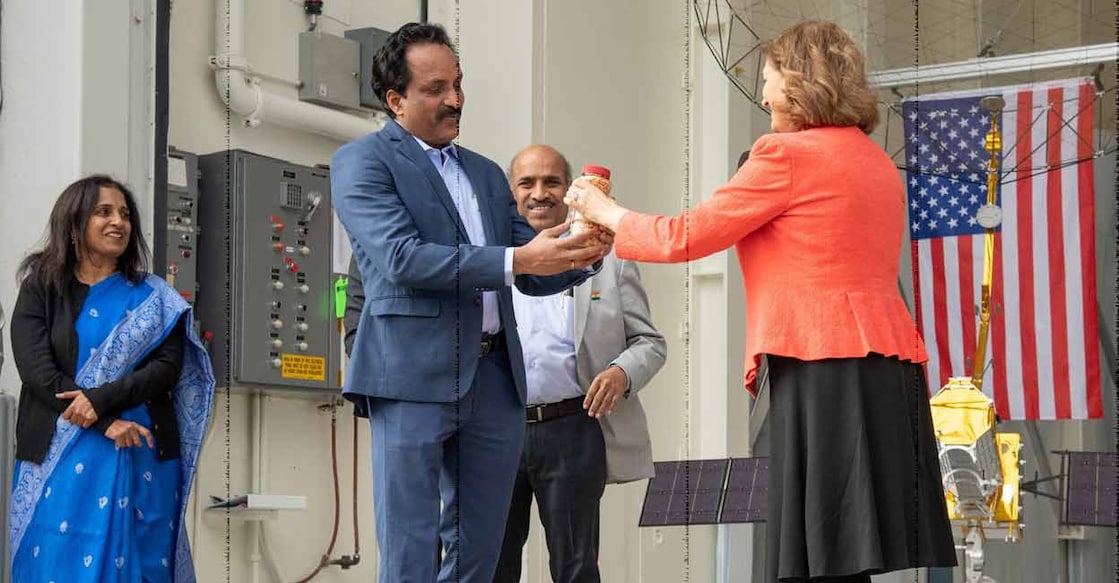India breaks coconut, US gifts 'lucky peanuts' ahead of joint science operation

Mail This Article
The countdown to an exciting science exercise jointly conducted by the United States' NASA (National Aeronautics and Space Administration) and India's ISRO (Indian Space Research Organisation) began with a bit of tradition -- the breaking of coconuts and handing over of 'lucky peanuts'.
The event was the transfer of payload for NISAR (NASA-ISRO Synthetic Aperture Radar) to an ISRO delegation that visited the Jet Propulsion Laboratory in California the other day.
A NASA statement read: "Outside the facility, in front of a scale model of the NISAR satellite, NASA’s NISAR Project Manager Phil Barela and ISRO’s NISAR Project Director CV Shrikant ceremonially broke fresh coconuts. The tradition, common in India, often marks auspicious occasions and signifies hope for a smooth road ahead. Leshin also presented the ISRO delegation with a jar of JPL lucky peanuts."
What are JPL lucky peanuts?
According to NASA, handing over peanuts has been a tradition at JPL since the 1960s, for good luck.

The US had created a Ranger project, which was reportedly the first effort to launch probes toward the Moon. The mission failed six times. When it succeeded on the seventh attempt, science wasn't the only reason, apparently. Dick Wallace, the mission trajectory engineer, had handed out peanuts to calm people's nerves. It worked and JPL has followed the tradition since.
What's the mission?
According to NASA, the satellite that will travel to 'southern India' is scheduled for launch in 2024 from the Satish Dhawan Space Centre in Andhra Pradesh. "Over the course of its three-year prime mission, the satellite will observe nearly the entire planet every 12 days, making observations day and night, in all weather conditions," NASA said.

NISAR is expected to detect both 'subtle and dramatic movements' on Earth, which could be events preceding earthquakes, landslides or volcanic eruptions. "..data about such movement could help communities prepare for natural hazards. Measurements of melting sea ice and ice sheets will improve understanding of the pace and impacts of climate change, including sea level rise."

